NZXT H230 Silent Case Review
by Dustin Sklavos on September 13, 2013 12:00 PM EST- Posted in
- Cases/Cooling/PSUs
- NZXT
- ATX
- Case
Plugging in and powering on the NZXT H230, there were basically two ways things were going to go: it was going to have adequate airflow and middling acoustic performance, or it was going to have poor airflow and good idle acoustic performance. Given the modest hopes NZXT has for the H230, though, just about anything beyond our stock configuration is probably going to be a bit beyond what this case was intended for.
Unfortunately, even the modest task of cooling a stock Intel Core i7-2700K and an upper midrange video card with an open air cooler instead of a blower is a bit beyond the H230. The GTX 560 Ti we use is rated with a TDP of 170 watts, which is high but not astronomical.
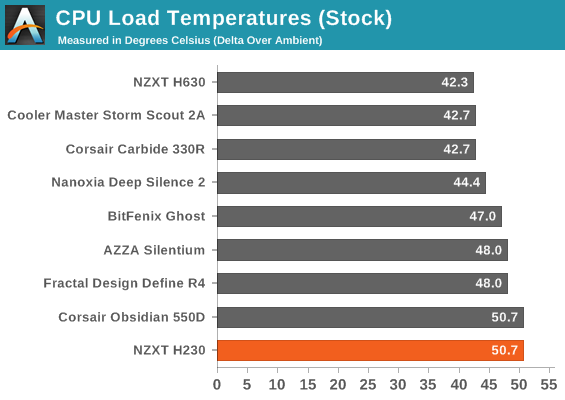
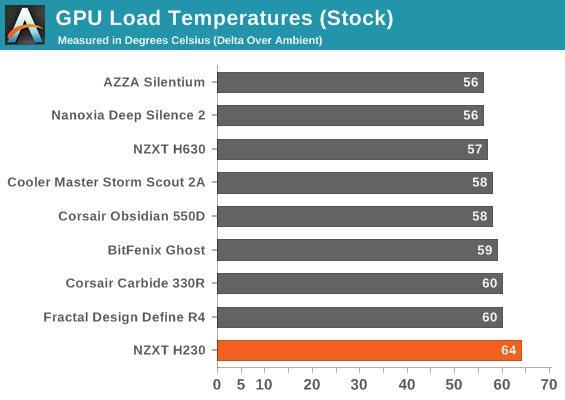

Every other silent case meets or beats the H230 thermally, and this is essentially "easy mode" right now. The cases included are mostly budget; this isn't a murderer's row of hardware but reasonable competition, and it's already not looking good.
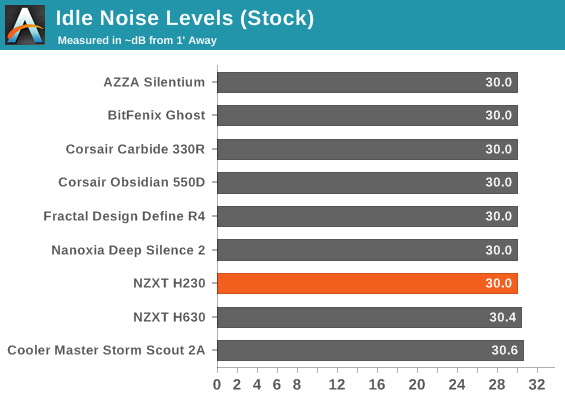
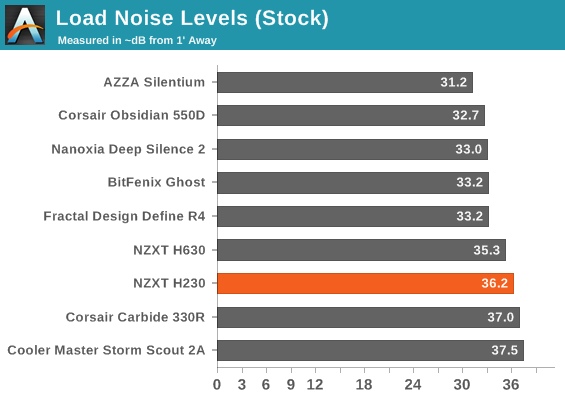
Poor thermals mean loud internal fans, and that's exactly what we run into. The H230 just doesn't have much in the way of cooling capacity, and as a result it's louder than most of the other cases under load.
Overclocking the testbed only made matters for the H230 worse.
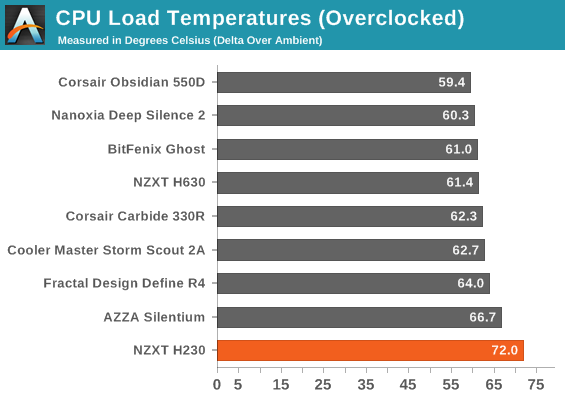
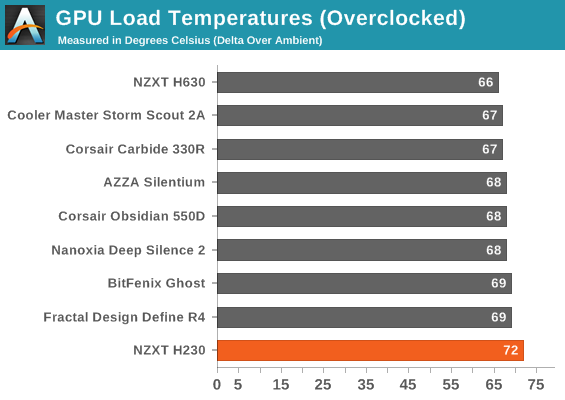
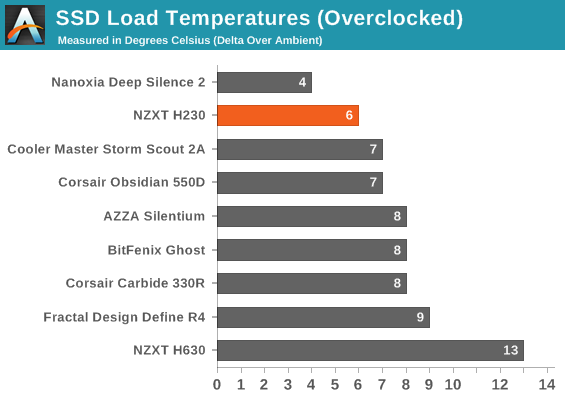
Overclocked thermals are pretty dire on almost every front but the SSD, which gets a healthy amount of totally unneeded cooling. The GTX 560 Ti and i7-2700K were both hitting temperatures well into the 90s, with the cores of the 2700K hitting as high as 98C in a 24C ambient room.

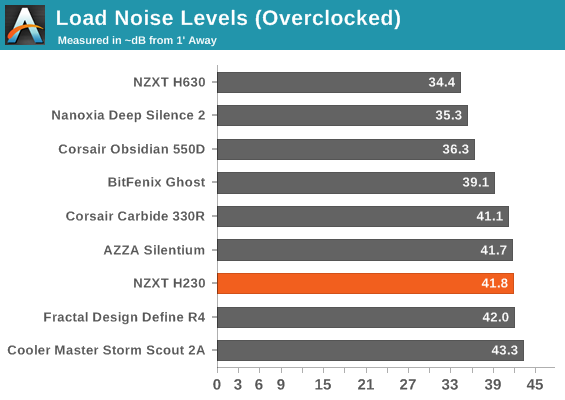
Noise levels go to hell right along with the thermal performance. The NZXT H230 was already having trouble keeping its components cool at stock speeds, bumping up stress just makes things worse.
To satisfy morbid curiosity, here are the test results from the full fat testbed, which goes well beyond the ~320W our overclocked testbed generates.
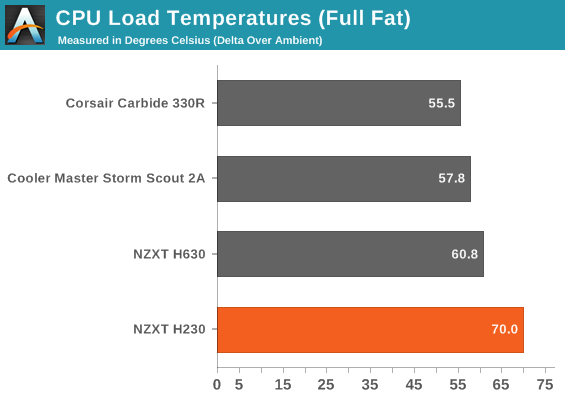
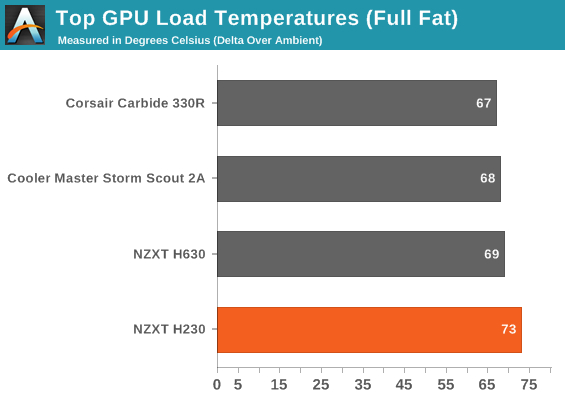
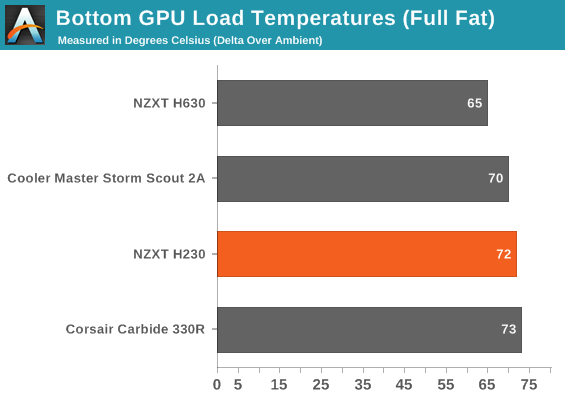
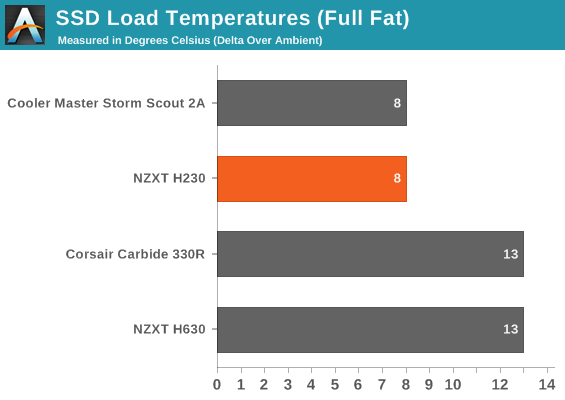
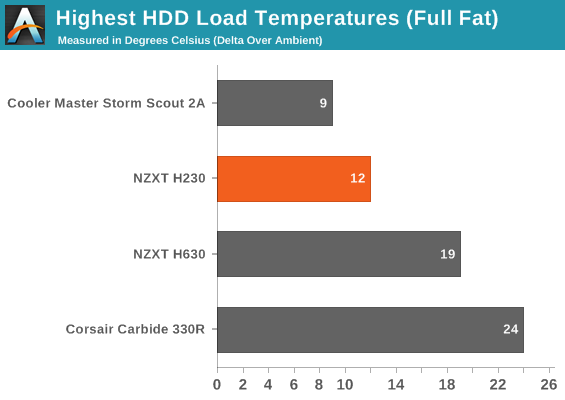
At least the storage is running cool?
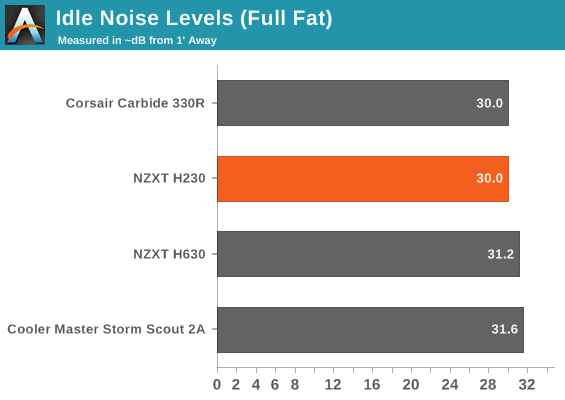
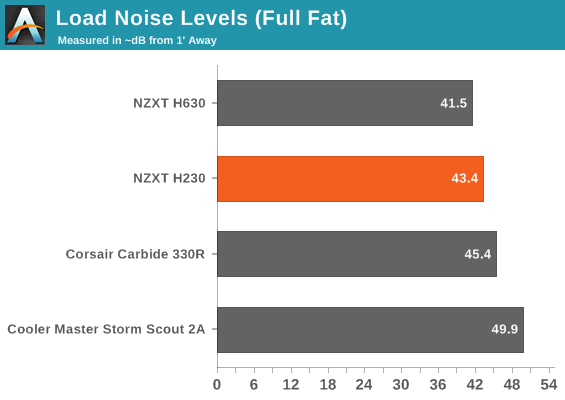
The H230 does some work containing the noise as its internals roast, but it should be abundantly clear at this point that this is not a case suited to even upper high end hardware. Those of you planning on using this for your AMD FX-9590 build will have to look elsewhere.










29 Comments
View All Comments
flemeister - Monday, September 16, 2013 - link
New Audio Test Gear 2008 [SPCR] -- http://www.silentpcreview.com/article875-page1.htm...An Anechoic Chamber for SPCR -- http://www.silentpcreview.com/anechoic_chamber_SPC...
rpg1966 - Saturday, September 14, 2013 - link
Can you please produce charts that show both temperature and noise on the same chart, one on X axis and the other on Y-axis, so that we can more easily interpret the results and compare cases? It would be trivially simple to do.jasonnovak - Saturday, September 14, 2013 - link
I bought an H2 when they first came out, I'm interesting in some more info on the factory tweaks you mention they made to improve airflow. I did a mod I came across somewhere cutting some material away from the bottom of the door.Building Wealth - Saturday, September 14, 2013 - link
When's the pink version out?I like the design of this case. The front door looks good in my opinion. Those drive trays are annoying, though.
Building wealth http://bit.ly/14P6Too
Silma - Monday, September 16, 2013 - link
I have a loud pc with 6 7200 rpm harddrives in raid 6, 2 ssds, 1 gtx680, and an Intel i920.Would a silent enclosure work or is it wishful thinking? If yes which enclosure?
ON my Alienware laptop I have a silent mode which switch from gpu to processor gpu - the laptop basically goes silent, the difference is very noticeable. Is there nowadays a similar technology for desktop pcs?
TGressus - Thursday, September 19, 2013 - link
Near silence can be done in your situation with oversized or multiple radiators used with water blocks and mid-speed/dampened water pump(s) for the the cpu and gpu. This will eliminate the loudest fans and allow you to tune the fans around the case and at the radiator to a lower speed. Fluid-dynamic bearing fans seem to be the best balance of silence/longevity.Without water cooling you best bet is a huge aluminum case that allows for convection and radiation through the case itself. Again most of the noise is going to be a result of your cpu/gpu heat sink efficiency and how their fans react to your workloads, plus the tuning of the case fans.
dehemke - Monday, September 16, 2013 - link
Antec P180 retread again? Was the 180/2 the one true silent case that everything since has just been a refactor of? Where's the new innovation?quas - Saturday, September 21, 2013 - link
How did you test? Did you open the front panel door to allow more air in?xoham - Friday, February 14, 2014 - link
If the front door was a rectangle instead of that cut, and if they took off the brand name, this would be a perfect looking case for me. I don't get why they are putting on brand names. It is not like I take this computer around and people get to see what brand it is and then go buy one.